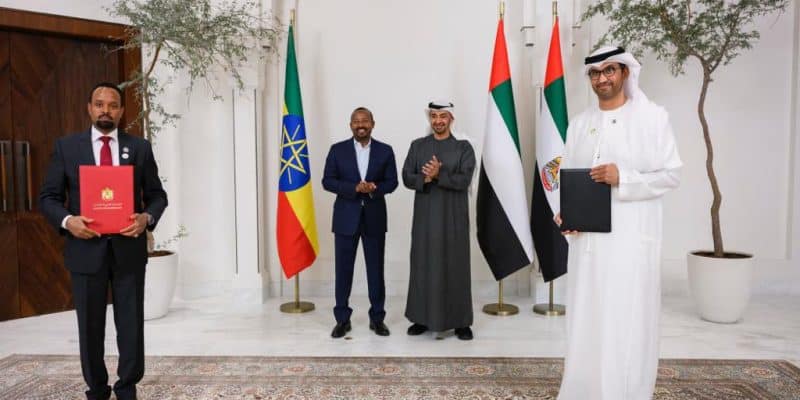UAE-based energy company Masdar has signed a joint development agreement with the Ethiopian authorities. In partnership with Ethiopia Investment Holdings (EIH), the independent power producer (IPP) wants to build two 500 MWp solar photovoltaic plants in Ethiopia.
On the sidelines of the Abu Dhabi Sustainability Week which ended on Thursday 19 January 2023 in the United Arab Emirates, UAE-based independent power producer (IPP) Masdar signed a joint development agreement (JDA) with Ethiopia Investment Holdings (EIH), one of the largest sovereign wealth funds on the African continent with more than $150 billion of assets under management.
The partnership concerns the development of a project to build two 500 MWp solar parks in Ethiopia. The co-development agreement was signed in the UAE capital Abu Dhabi in the presence of Ethiopian authorities, including Prime Minister Abiy Ahmed. “Happy to see the signing of a JDA between the Ethiopian government and Masdar to develop two solar photovoltaic power plants,” the Ethiopian chief executive said on his Twitter account.
What’s at stake for Ethiopia
Masdar signed the first agreement for the 500 MWp solar project in March 2021. At the time, the Ethiopian state-owned company made a commitment to the Ethiopian Finance Minister to develop, finance and provide design, engineering, procurement, construction, testing, commissioning, insurance, operation and maintenance of the solar PV plants. The UAE company will also build transmission infrastructure.
Read also- ETHIOPIA: the start of production tests of the Great Renaissance Dam
The electricity generated will be sold to the state-owned Ethiopian Electric Power (EEP) under a power purchase agreement (PPA) that has not yet been signed. The concession granted to Masdar and its partner EIH is expected to allow Ethiopia to diversify its electricity mix. According to EEP data, Ethiopia already has an installed capacity of 4,898 MW, 90% of which is hydro.
Hydropower capacity is expected to increase further in the coming years with the gradual commissioning of the Grand Ethiopian Renaissance Dam (GERD). Its power plant will be equipped with 16 Francis turbines capable of delivering 6,450 MW of power. This pronounced dependence on hydroelectricity does not bode well in a local context marked by the resurgence of drought episodes that reduce the level of filling of dams, and therefore the production of hydroelectric power plants.
Jean Marie Takouleu







